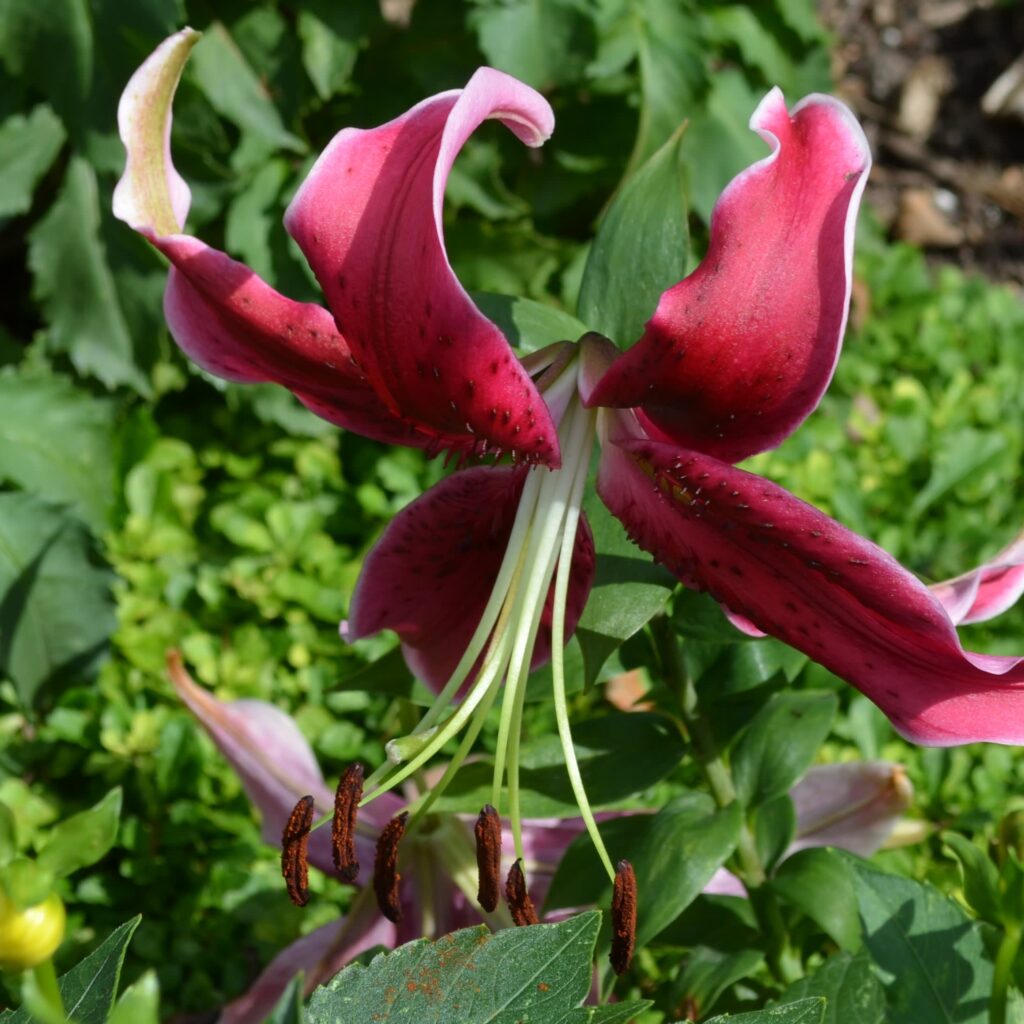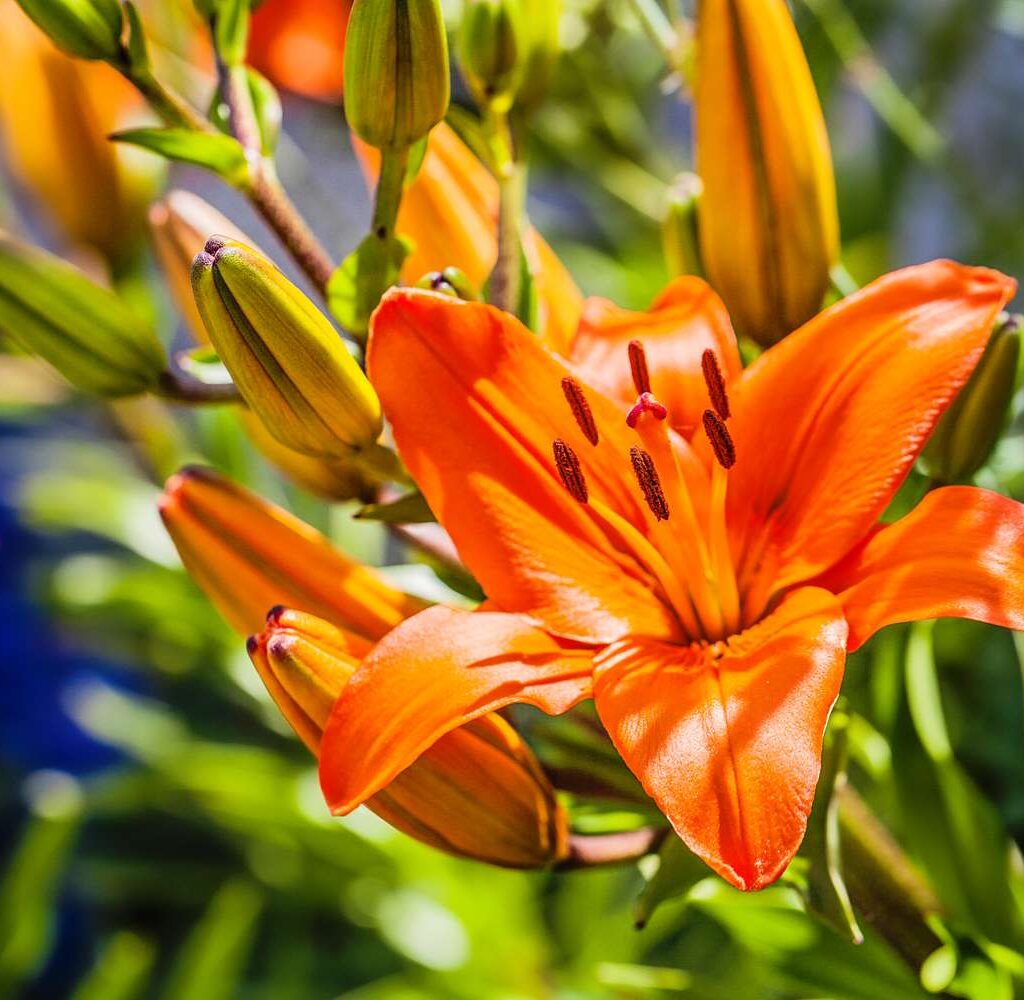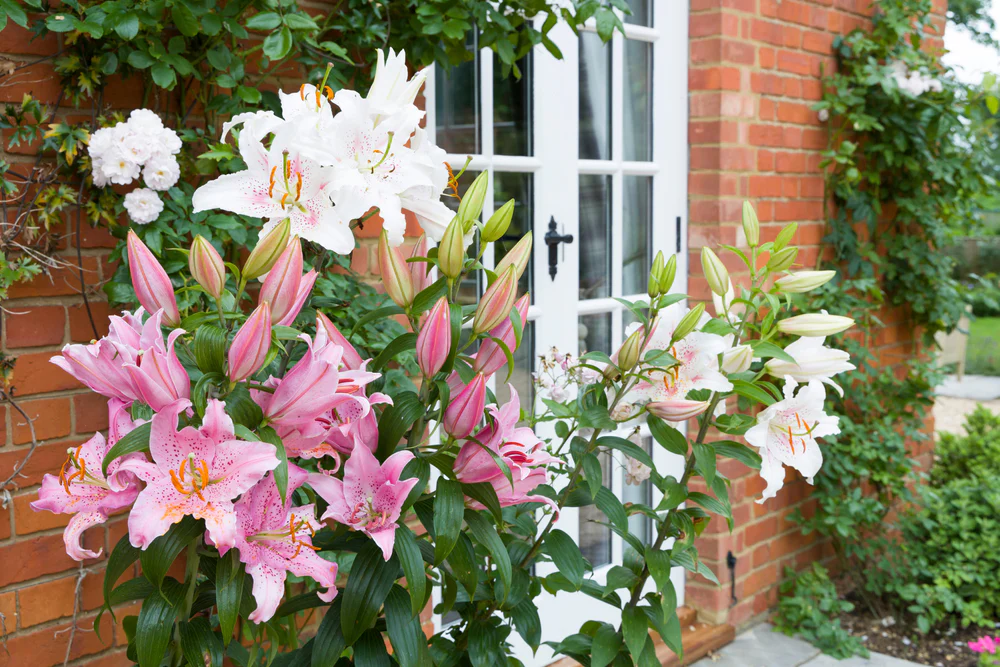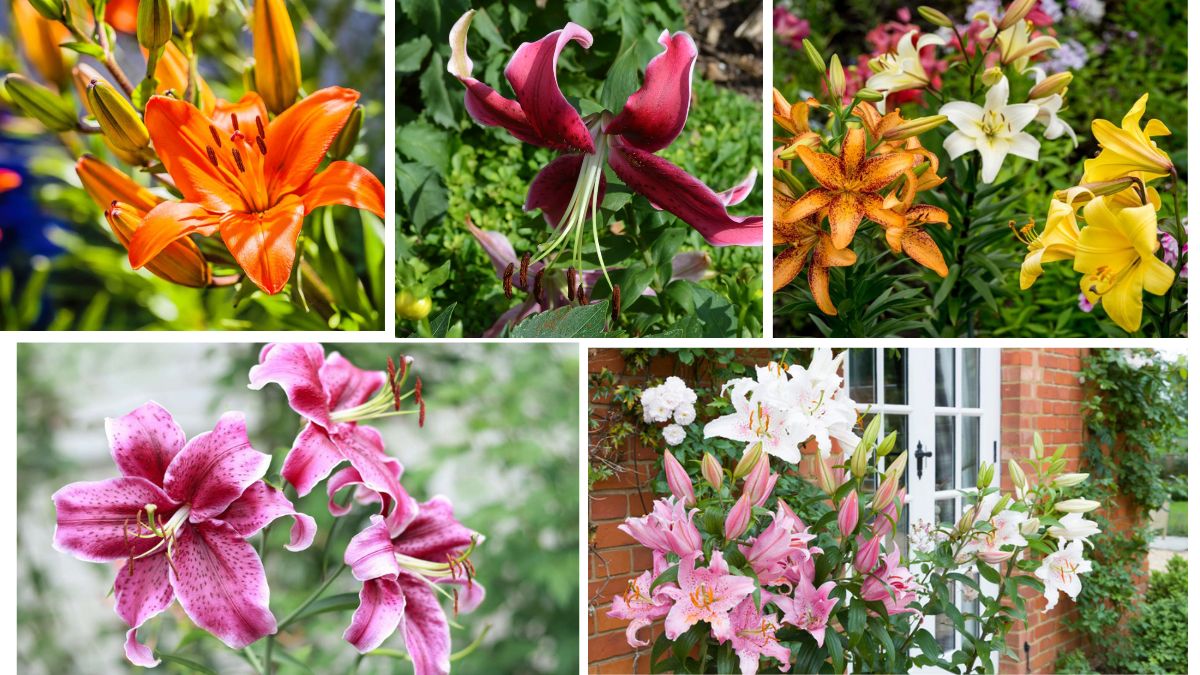Lilies, with their timeless elegance, fragrant blooms, and vibrant hues, are a favorite choice among gardeners across the globe. Known for their trumpet-shaped flowers and regal stature, lilies symbolize purity, renewal, and prosperity. Whether you’re a beginner or an experienced gardener, growing lilies in your garden can be an enriching and rewarding experience.
This comprehensive article dives into everything you need to know about growing lilies—from choosing the right variety to caring for them year-round. Let’s explore these elegant blossoms and discover how to make them thrive in your garden.
Why Choose Lilies for Your Garden?

Lilies (genus Lilium) are perennials that return year after year, blooming with minimal effort if planted correctly. Here’s why gardeners adore lilies:
- Aesthetic Appeal: Lilies come in numerous colors—white, pink, orange, yellow, and even deep maroon.
- Fragrance: Many lily varieties are sweetly scented, adding aromatic value to your garden.
- Long Blooming Period: Blooming from late spring to summer, lilies offer color for weeks.
- Versatility: Perfect for beds, borders, containers, or as cut flowers.
Popular Types of Lilies
- Asiatic Lilies
- Earliest to bloom
- Non-fragrant
- Compact and hardy
- Perfect for beginners
- Oriental Lilies
- Fragrant and large blooms
- Bloom mid to late summer
- Require rich, slightly acidic soil
- Trumpet Lilies
- Tall, with trumpet-shaped flowers
- Strong fragrance
- Long-lasting bloom period
- Martagon Lilies
- Downward-facing blooms
- Tolerant of shade
- Ideal for woodland gardens
- Tiger Lilies
- Orange petals with black spots
- Very hardy
- Multiply quickly
Step-by-Step Guide: How to Grow Lilies Successfully

1. Choosing the Right Location
Lilies love sunlight. Select a spot that receives at least 6–8 hours of full sun daily. Though they can tolerate some shade, less light means fewer blooms. Ensure the location also has good air circulation and drainage to prevent diseases like botrytis (a fungal infection).
2. Soil Preparation
Lilies need well-draining soil enriched with organic matter. Here’s how to prep it:
- Soil Type: Slightly acidic to neutral (pH 6.0–7.0)
- Drainage: Avoid clay-heavy or soggy areas
- Amendments: Add compost, aged manure, or leaf mold to enrich the soil
Pro Tip: If your garden has poor drainage, consider raised beds or planting lilies in large containers.
3. Planting Lily Bulbs
Timing is essential. Plant lily bulbs in the fall (September to November) or early spring depending on your climate.
How to Plant:
- Depth: 6–8 inches deep (2–3 times the height of the bulb)
- Spacing: 8–12 inches apart
- Orientation: Pointy end up
- Watering: Water thoroughly after planting to settle the soil
Mulch the bed with 2–3 inches of organic mulch to retain moisture and suppress weeds.
Essential Lily Care Tips

1. Watering
Lilies dislike soggy soil but still need consistent moisture during their growing season. Water deeply once or twice a week, especially during dry spells. Avoid overhead watering, which can encourage fungal diseases.
2. Fertilizing
Feed your lilies for healthy foliage and prolific blooms:
- Before Bloom: Use a balanced fertilizer (10-10-10 or 5-10-10)
- After Bloom: Fertilize again to nourish the bulbs for next year’s growth
Apply slow-release granules or water-soluble fertilizer every 4–6 weeks during the growing season.
3. Staking
Tall varieties like Oriental or Trumpet lilies may require staking to support their long stems. Use bamboo canes or metal stakes and tie loosely with soft twine.
Pruning and Deadheading
- Deadheading: Remove spent blooms promptly to direct energy back to the bulb instead of seed production.
- Pruning: Once the leaves turn yellow and die back naturally, cut them down to ground level in late fall.
- Never cut green foliage—it’s crucial for photosynthesis and storing energy in the bulb.
Overwintering Lilies
In colder zones (USDA Zones 3–6), protect your lily bulbs during winter:
- Apply thick mulch: 4–6 inches of straw, shredded leaves, or pine needles
- Mark their location: Makes it easier to find bulbs in spring
In warmer climates (Zones 7–10), minimal protection is needed, but mulching still helps regulate soil temperature.
Common Pests and Diseases
- Aphids: These tiny pests can spread lily mosaic virus; control with neem oil or insecticidal soap.
- Lily Beetles: Bright red beetles that chew on foliage—handpick or use organic pesticides.
- Botrytis Blight: Causes brown spots on leaves; ensure good air circulation and avoid overhead watering.
Growing Lilies in Containers
Don’t have garden space? Lilies grow wonderfully in large pots.
Container Tips:
- Use a pot that is at least 12–14 inches deep
- Ensure good drainage (use a mix of potting soil and perlite)
- Water more frequently as pots dry out faster
- Fertilize monthly
Choose compact varieties like dwarf Asiatic or certain Oriental hybrids.
Companion Plants for Lilies

Pair lilies with plants that enhance their elegance and fill in bare ground at their base:
- Hostas
- Daylilies
- Coneflowers
- Salvias
- Ferns
These companions also help create visual interest, improve biodiversity, and deter pests.
Harvesting and Displaying Cut Lilies
Lilies make exceptional cut flowers and can last up to 2 weeks in a vase.
Tips:
- Cut early morning when buds just begin to open
- Leave at least 1/3 of the stem to nourish the bulb
- Remove pollen-laden anthers to avoid stains and prolong bloom life
- Change water every 2 days for freshness
Troubleshooting Common Lily Problems
| Issue | Cause | Solution |
|---|---|---|
| No Blooms | Lack of sunlight or nutrients | Move to sunnier spot, fertilize |
| Yellow Leaves Early | Overwatering or poor drainage | Improve drainage, adjust watering |
| Stunted Growth | Crowded bulbs | Dig and divide every 3–4 years |
| Floppy Stems | Weak light or lack of support | Stake stems, provide more light |
Final Thoughts
Lilies are among the most elegant and rewarding flowers to grow. With just a little attention to soil, sun, and watering, you can enjoy stunning blooms that bring grace and charm to your garden year after year.
Whether you’re planting Asiatic lilies for a vibrant border or Oriental lilies for their intense fragrance, this regal flower never fails to impress. Follow these tips to create a lily paradise in your own backyard—your garden will thank you with bold, elegant blooms that enchant every season.





